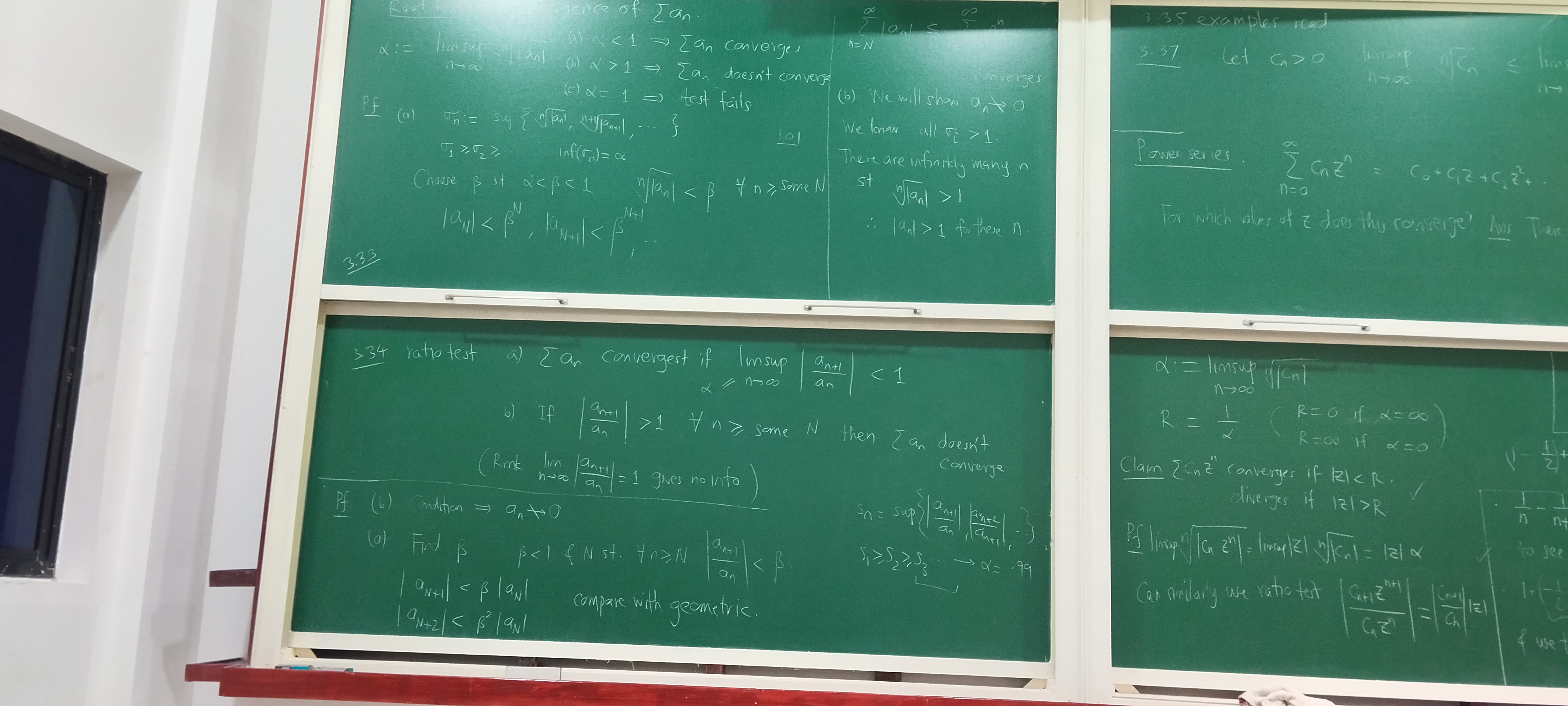
Prologue
Definition 1.
We say converges absolutely if converges.
For example, converges (by 3.43), but not absolutely. For a first principle proof, consider even and odd groupings of 2 consecutive terms, and see that they individually converge (recall the comparison test):
Let and . Now, triangle inequality to the rescue:
The RHS can be made less than for any . Thus, . So, the sequence must also converge to (which is , btw).
More convergence tests
Root test
Rudin, 3.33
Theorem 2.
Given , define
Then,
- if , converges (in fact, it converges absolutely);
- if , diverges;
- if , the test is inconclusive.
Proof
If , pick . We know that there exists such that implies .So, for , . We know converges. Hence, from the comparison test, converges. This implies converges.
If , we know that for all , there exists such that , i.e, . So, .
To prove (3), consider series and . Both have (Rudin, 3.20), but the first diverges, while the second converges. ❏
Ratio test
Rudin, 3.34
Theorem 3.
The series
- converges if ,
- diverges if for all , where is some fixed integer.
Proof
If (1) holds, in the same manner as in the previous proof, we can pick such that there exists such that for all , . In particular,So, for all . The result follows from the comparison test.
(2) prevents the limit of individual terms of the sequence from being 0. ❏
Warning
Note that for all for some fixed does not guarantee divergence. A counter example can be easily constructed by interlacing two appropriate convergent series.
Read examples at 3.35.
Power series
Definition 4(Definition (Rudin, 3.38)).
The power series of a sequence of complex numbers is the series
Theorem 5(Theorem (Rudin, 3.39)).
Given the power series , define
If , and if , . Then, converges if and diverges if .
Proof
Use the root test:
is called the convergence radius of .
Example 6(Examples).
- The series has , i.e, it converges only when .
- The series has , i.e, it converges for every .
- The above theorem is not easily applicable on the series , since showing takes some work. It is much easier to use the ratio test: , for all . Thus, .
- The series has . If , the series diverges, since does not tend to as .
- Thanks to the limits we proved here, it follows that and have . The former converges for all with magnitude 1 except (TBP). The latter converges for all with magnitude 1 by the comparison test, since ( converges since it is a p-series with ).